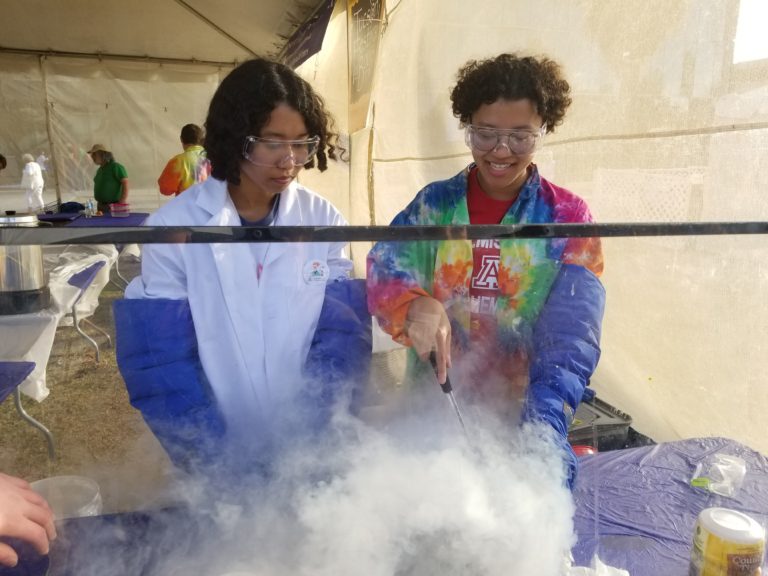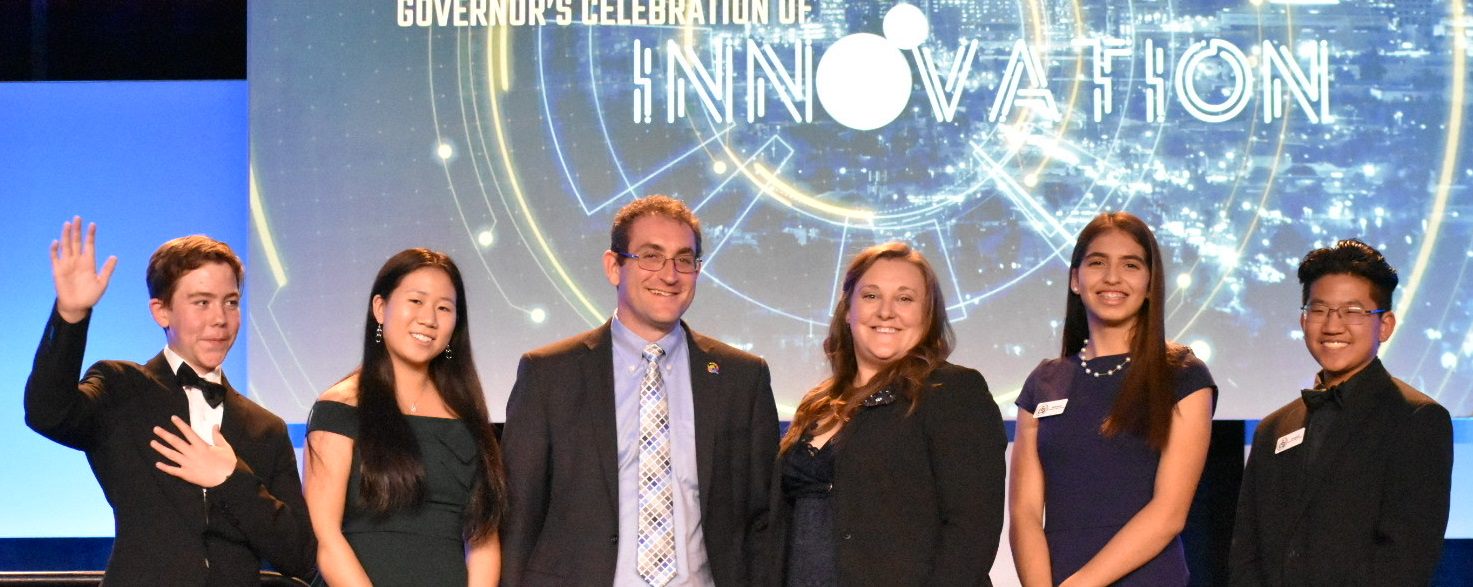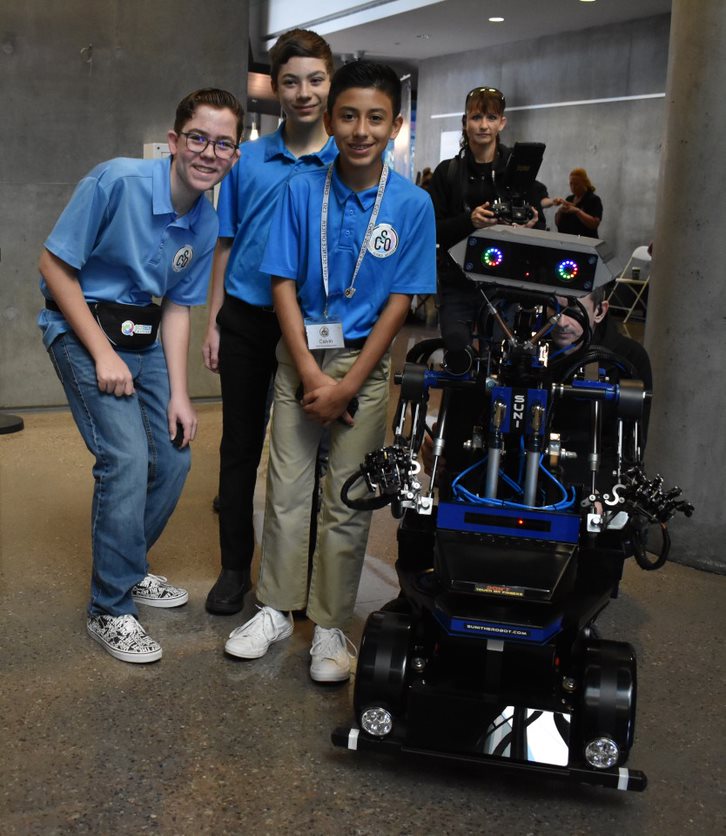
SciTech Institute is a nonprofit organization dedicated to enhancing and promoting STEM education and awareness in Arizona and beyond. Its programs include some of the strongest STEM initiatives in Arizona, including the Arizona SciTech Festival, the Chief Science Officers program, the Rural Activation and Innovation Network (RAIN) grant, the Arizona STEM School Community of Practice, Science For All, and more. ESAL spoke with SciTech Institute’s Executive Director Jeremy Babendure, who is also an associate professor at Arizona State University, about the organization’s mission and successful STEM programs.
JB: The Arizona SciTech Festival is one of your biggest programs. How did you decide to get this off the ground?
Babendure: I grew up in Arizona and went to Arizona State University as an undergrad in biochemistry. I then did my doctoral work at UC San Diego under Dr. Roger Tsien, whose claim to fame was creating or innovating fluorescent proteins. That work was really exciting to me, and one of the biggest outcomes after my doctorate was applying fluorescent technologies to get kids excited about science and biotechnology. As a result, Dr. Tsien and I created a program called ScienceBridge to bring cutting-edge science into the classroom through science kits. We also started the San Diego Science Festival along with a national initiative called the Science Festival Alliance. I ultimately wanted to bring these ideas back to my home state of Arizona, so that’s how the Arizona SciTech Festival started 10 years ago. In addition to just being a really cool event, the SciTech Festival became a way to build connections, communities, and networks in the state. It’s now one of the largest science festivals in the world. Just prior to COVID, we incorporated over three dozen local communities, helped list over 3,000 events, and collectively brought in over 500,000 attendees.
JB: Tell us how companies and sponsorships have helped support your mission and success.
Babendure: The type of support depends on the region as well as the company. Some businesses come to us with an existing STEM program that can be easily integrated into some of our programs like the Arizona SciTech Festival. For example, Northrop Grumman has been heavily engaged in the Chandler Science Spectacular festival, setting up a couple dozen tables of interactive physics experiments for students. Other companies prefer to set up exhibit tables at these events to showcase what they do and what kind of jobs students can obtain. Viasat is a company that prefers volunteering on a one-to-one mentorship basis, so they actually adopted one of our schools to work directly with the students. Other companies – for instance, Cox Communications – have helped create new content/programs such as TV shows, youth reporters, and STEM recognition awards. Overall, the extent of support comes down to businesses’ local interest as well as how efficient we are at training and deploying employees of these companies.

Jeremy Babendure, SciTech COO Kelly Greene, and several Chief Science Officers being recognized at the Governor’s Celebration of Innovation in 2019.
JB: How did your Chief Science Officer (CSO) program start and how did it become so popular?
Babendure: Part of our professional development model at San Diego was bringing in students to help lead the implementation of STEM-based activities. We found that kids were often better at learning new technologies than the teachers, so the idea of the CSO program was to help empower students to take on leadership roles in STEM. This program was formally launched in Arizona seven years ago, and the idea really took off because we got attention from the White House during our first year. We became an inaugural member of the STEM Learning Ecosystem, and the excitement that came with that really helped us build a large national presence. Now, we have been able to grow the CSO network into ten states and four countries. There are currently close to 800 CSOs, and we are projecting to reach over 1,000 CSOs next year, especially with the growth we are already seeing in our new CSO program in Mexico. We would love to continue this trajectory of growth and ideally be in every state. Hopefully, we can eventually be in over 100 countries and build a global cabinet of kids that can really work to advocate for what they see is important for the upcoming generation.

Chief Science Officers with SUNI the Robot at 2019 STEM Summit.
JB: Where do you envision your programs going in the next 5-10 years?
Babendure: We have two main trajectories; one is the Arizona front and the other is the national/international front. With Arizona, our hope is to put more strength into building regional hubs that can pull together community members in areas around the state as well as to pull together statewide working groups to “connect the dots” of conceptual ideas that could feed into those hubs. We also hope to integrate our Arizona programs into the state budget so that there is sustainable support. On the national/international front, we really just want to continue our growth and ideally build more levels of higher connection. For example, I could foresee our CSO program structuring into several different levels, with the top level of the strata being advisors to the president and trickling down into various types of leadership at the regional, local, and school levels. There is a lot of potential at the international level too. We are starting to see possibilities open up for our CSOs to become integrated in global organizations like the UN and come together on important topics around STEM. I think we would be on a pretty amazing trajectory if we get to that point in 10 years.
JB: How did the pandemic affect the success of the Arizona SciTech Festival this year, and how do you think the rise in digital communications will shift your future strategies?
Babendure: Our in-person event numbers were definitely affected by the pandemic. We used to be able to draw in tens of thousands of attendees at the Arizona SciTech Festival, but we were unable to hold this event in-person this year. We were, however, able to digitally engage more than ever before, hosting over 250 events and capturing 189 hours of footage. That being said, we were lucky to be able to reach people from across the world – for example, from Kuwait and Kenya and other rural areas – who otherwise would not have been able to access our content. In the future, I think the idea of continuing with a digital thread really makes a lot of sense. If we can get past the burnout, I am hopeful that we can leverage these technologies to reach more community members, students, and teachers for our events and programs. Digital platforms are also nice as we expand our CSO programs because our team is able to attend more events and provide additional support and training to our growing programs than we used to be able to do.
JB: Do you have any advice for scientists and engineers who wish to get involved in local government and outreach?
Babendure: I think it’s important to recognize that even though you may be training as a scientist or an engineer, you are learning unique skills that can be readily translated outside of traditional STEM professions and into the community or government positions. Scientists learn a lot of good problem-solving skills and engineers learn a lot of valuable process skills. You can actually bring these skill sets to outside conversations and use your STEM mindset to help round out a problem-solving team for a community or policy goal. I think it is important to get more STEM professionals into these kinds of public community sectors so that critical thinking and problem solving is at the core of public-facing decision making.
Are you involved with an organization or effort that you think might be of interest to the ESAL community? Or have heard about an organization or initiative that you’d like to learn more about? Let us know here, and we may feature it in a future post.